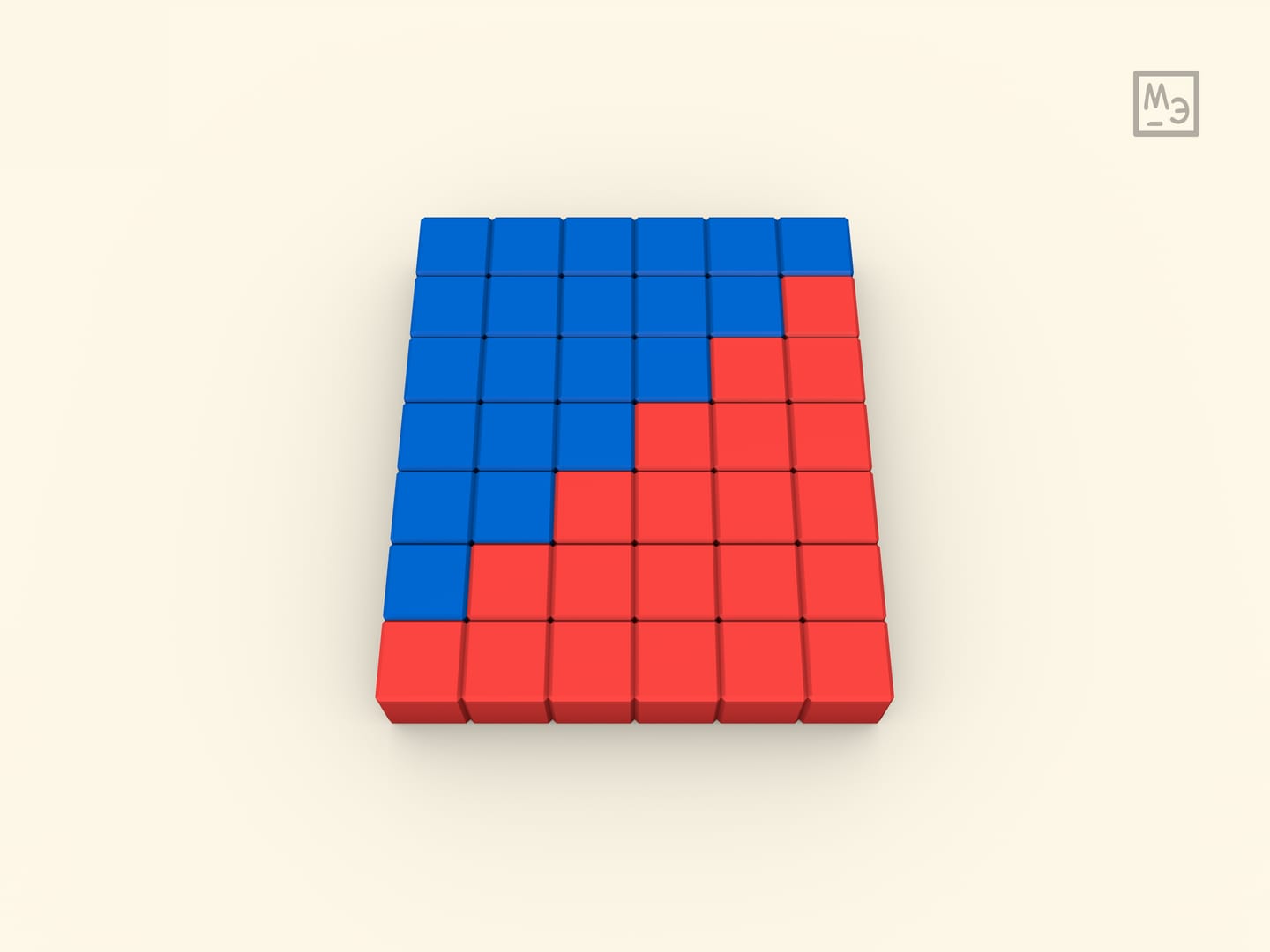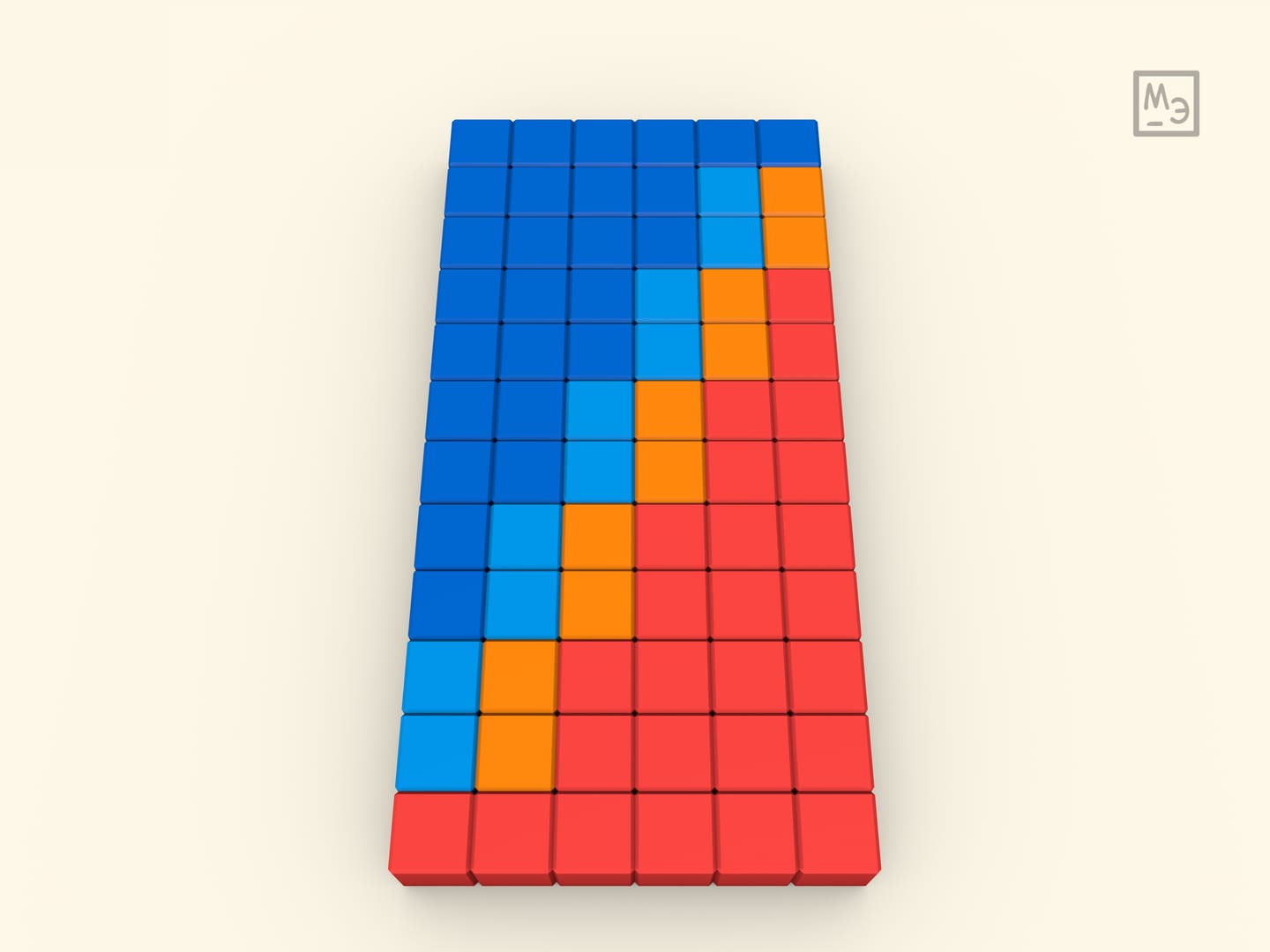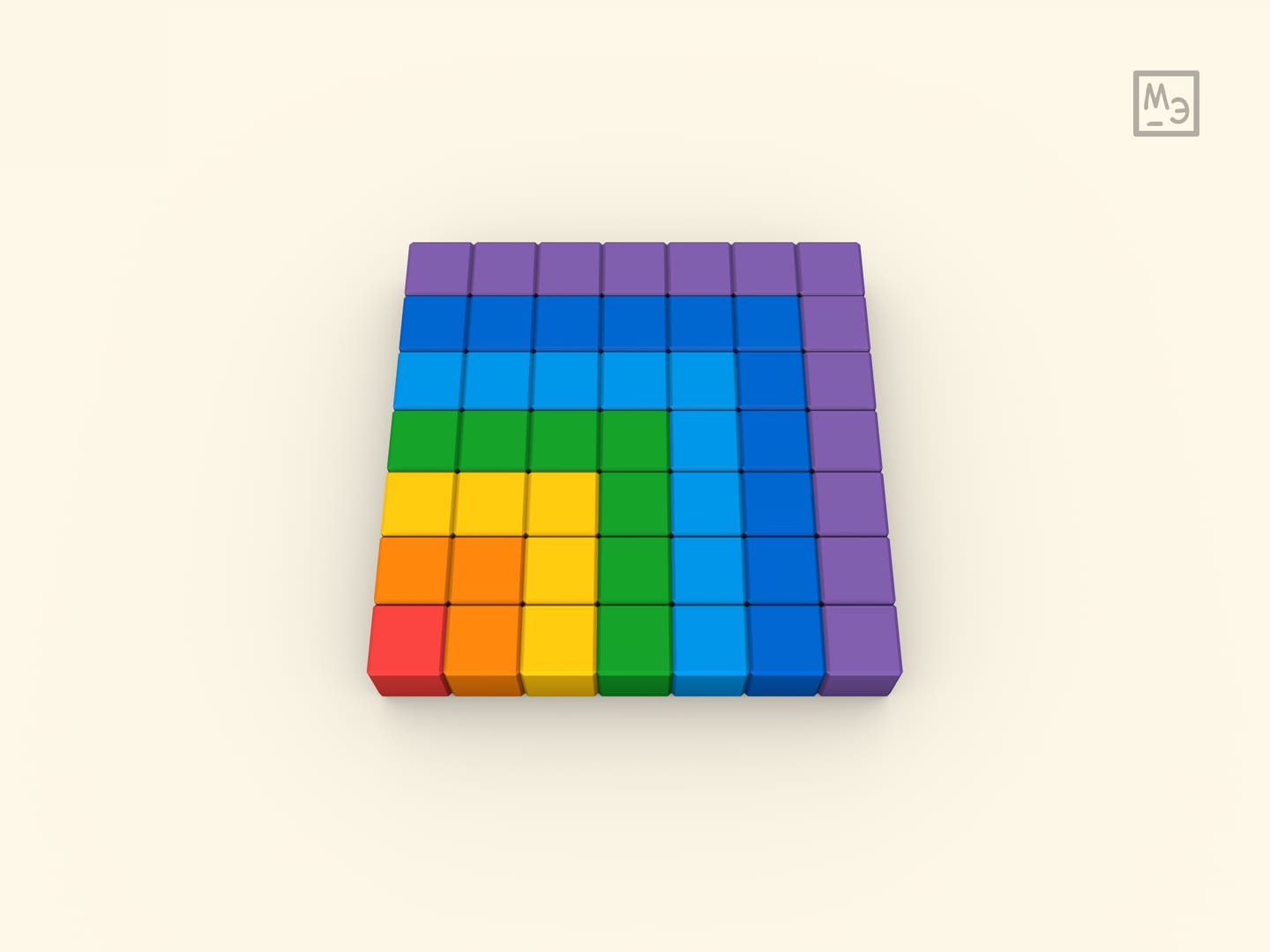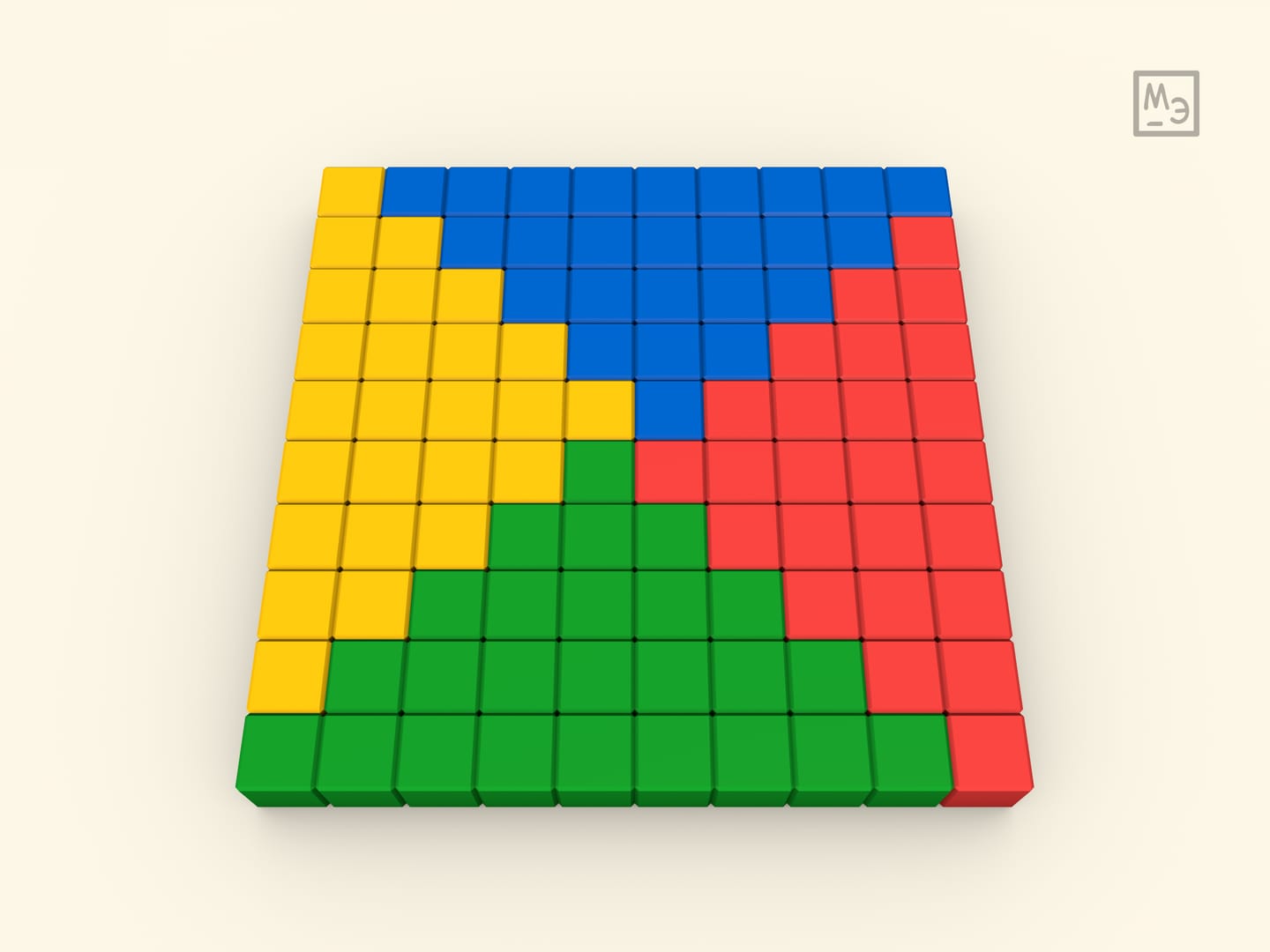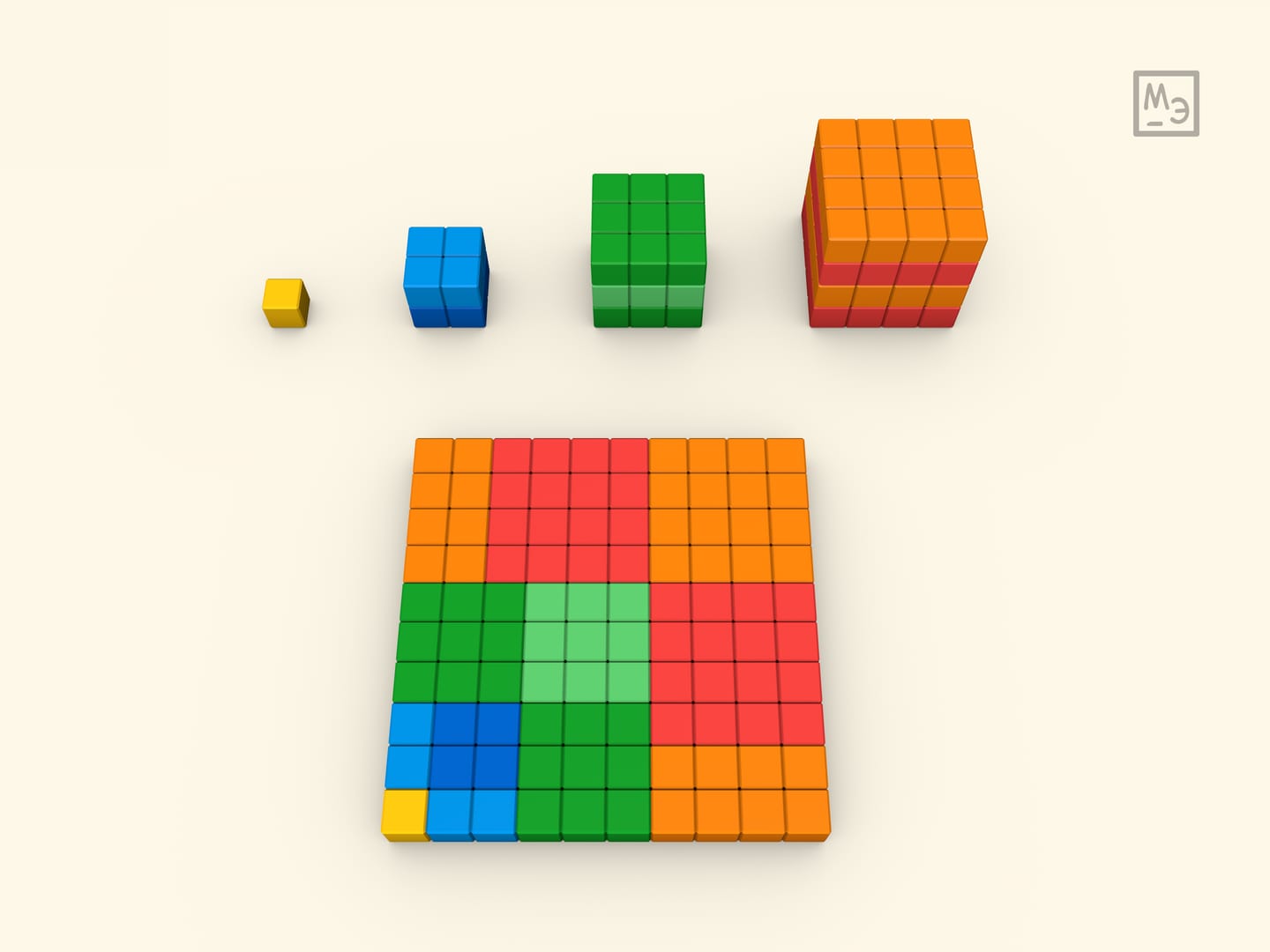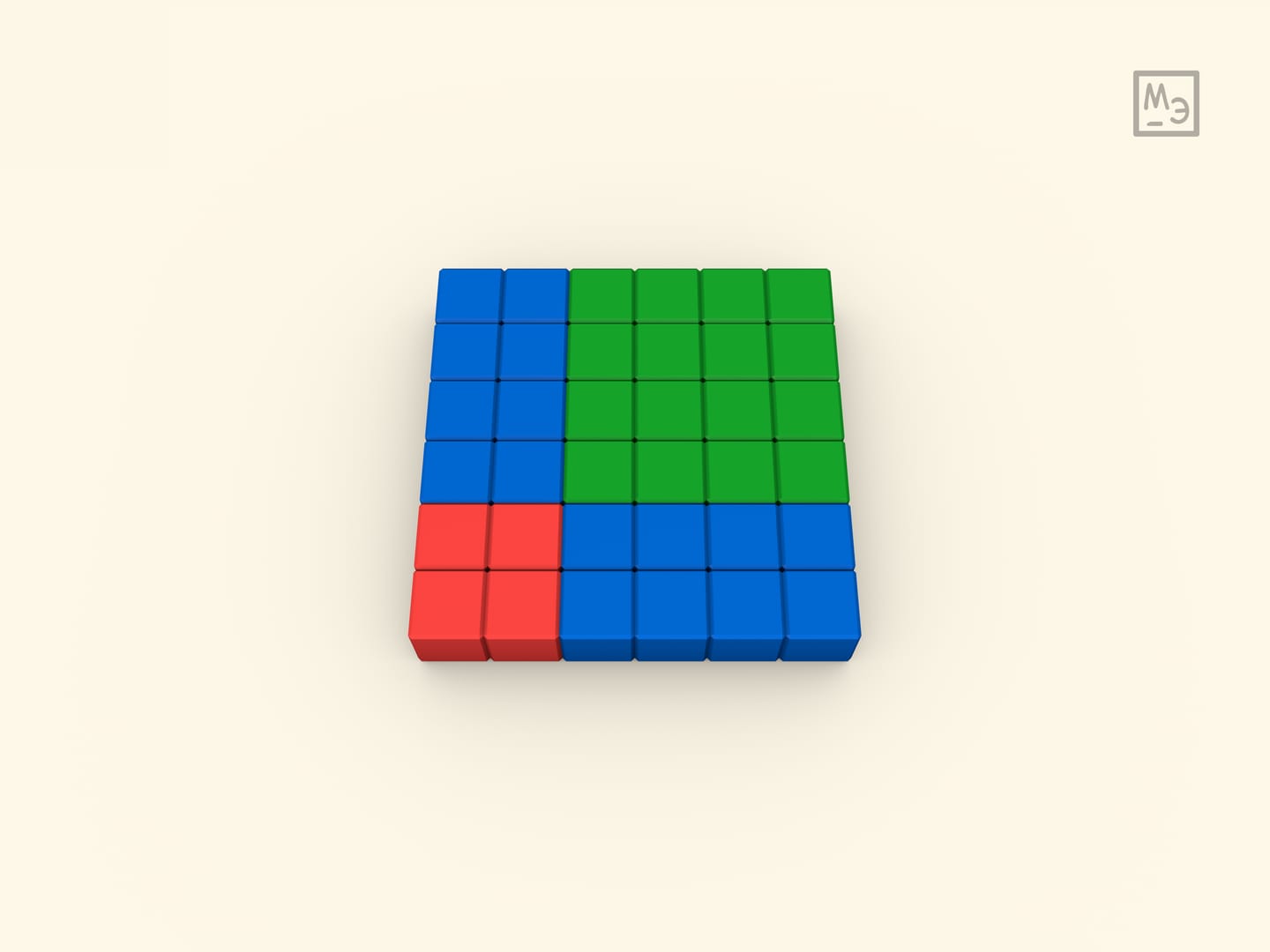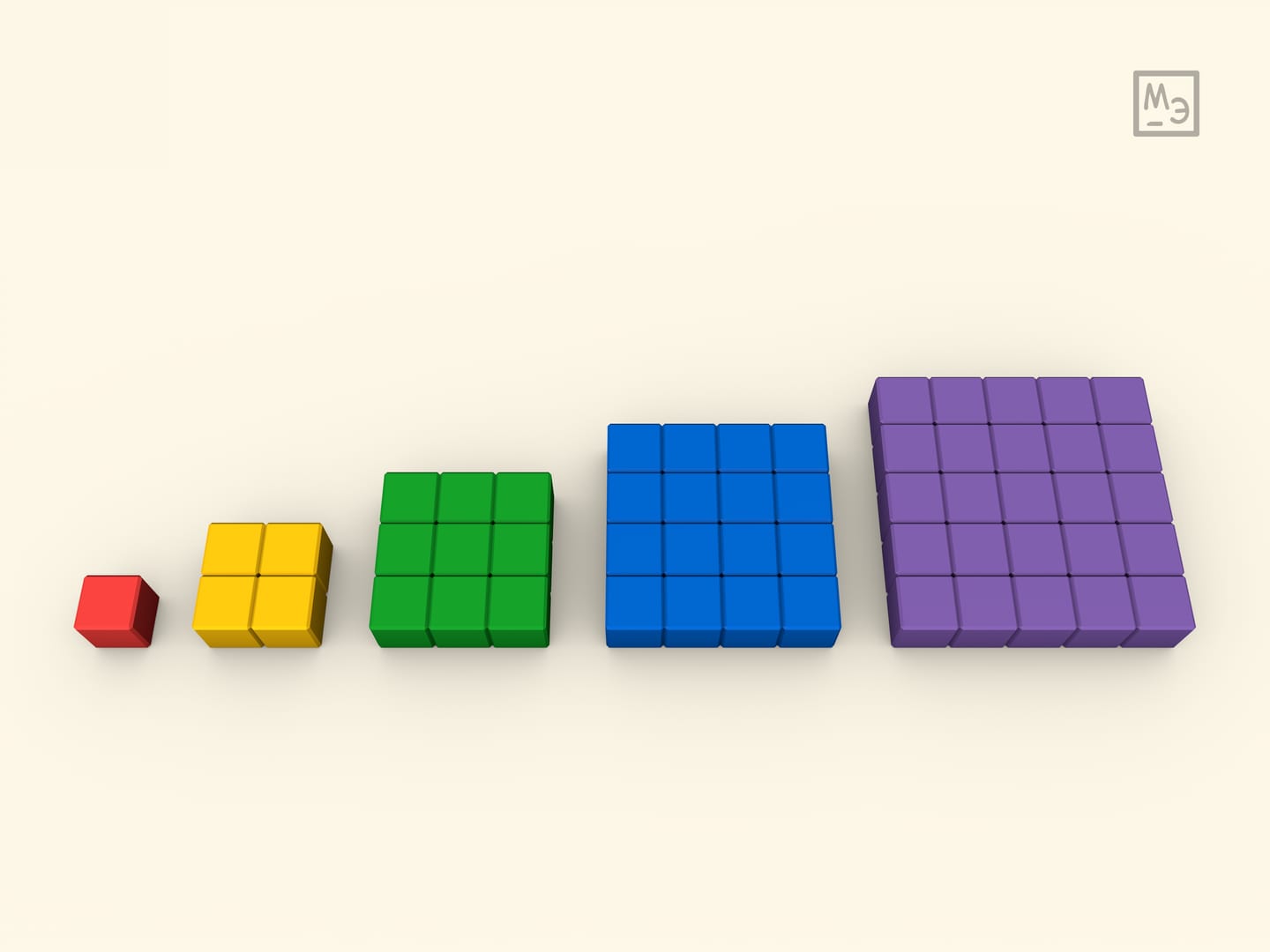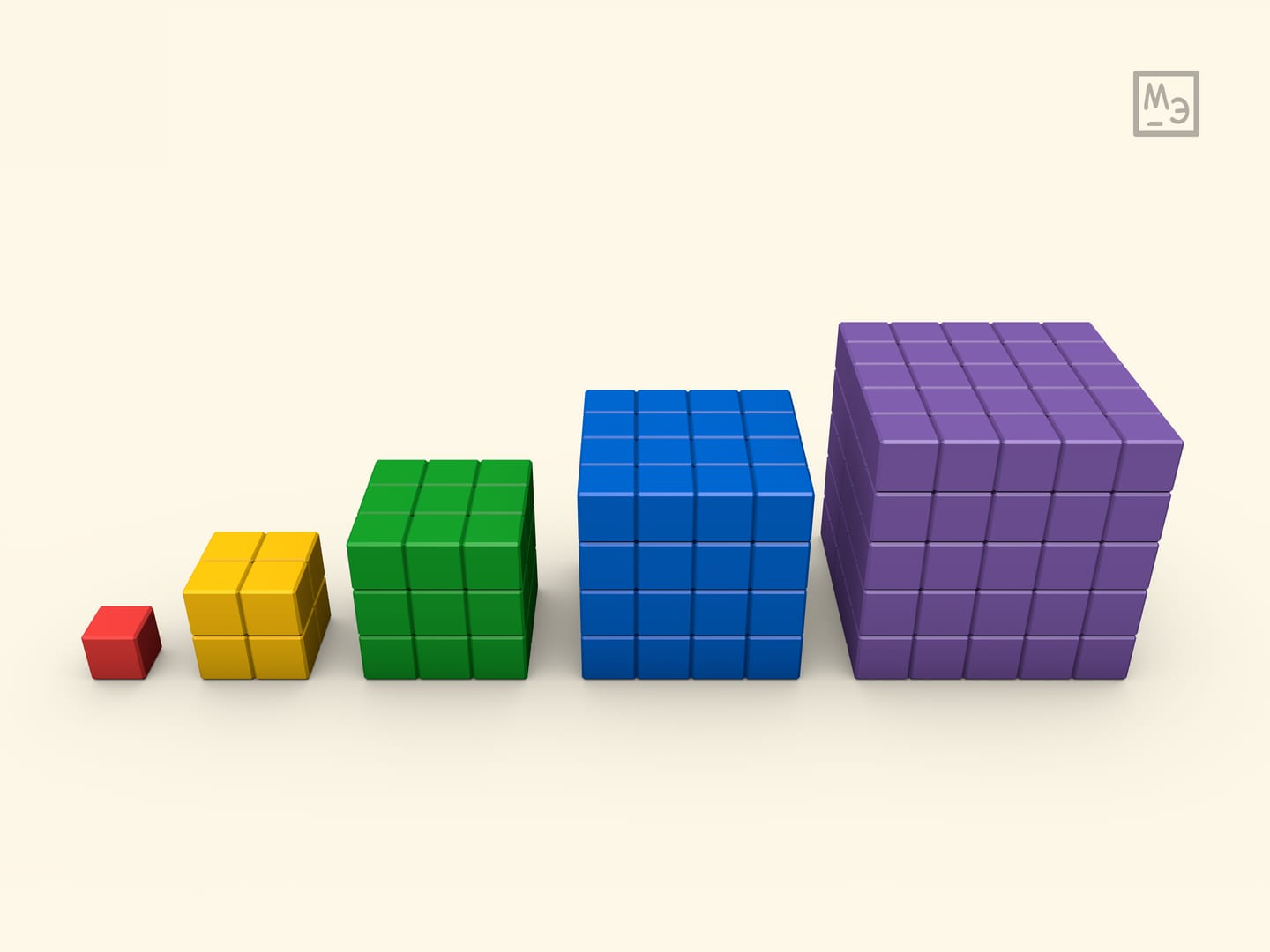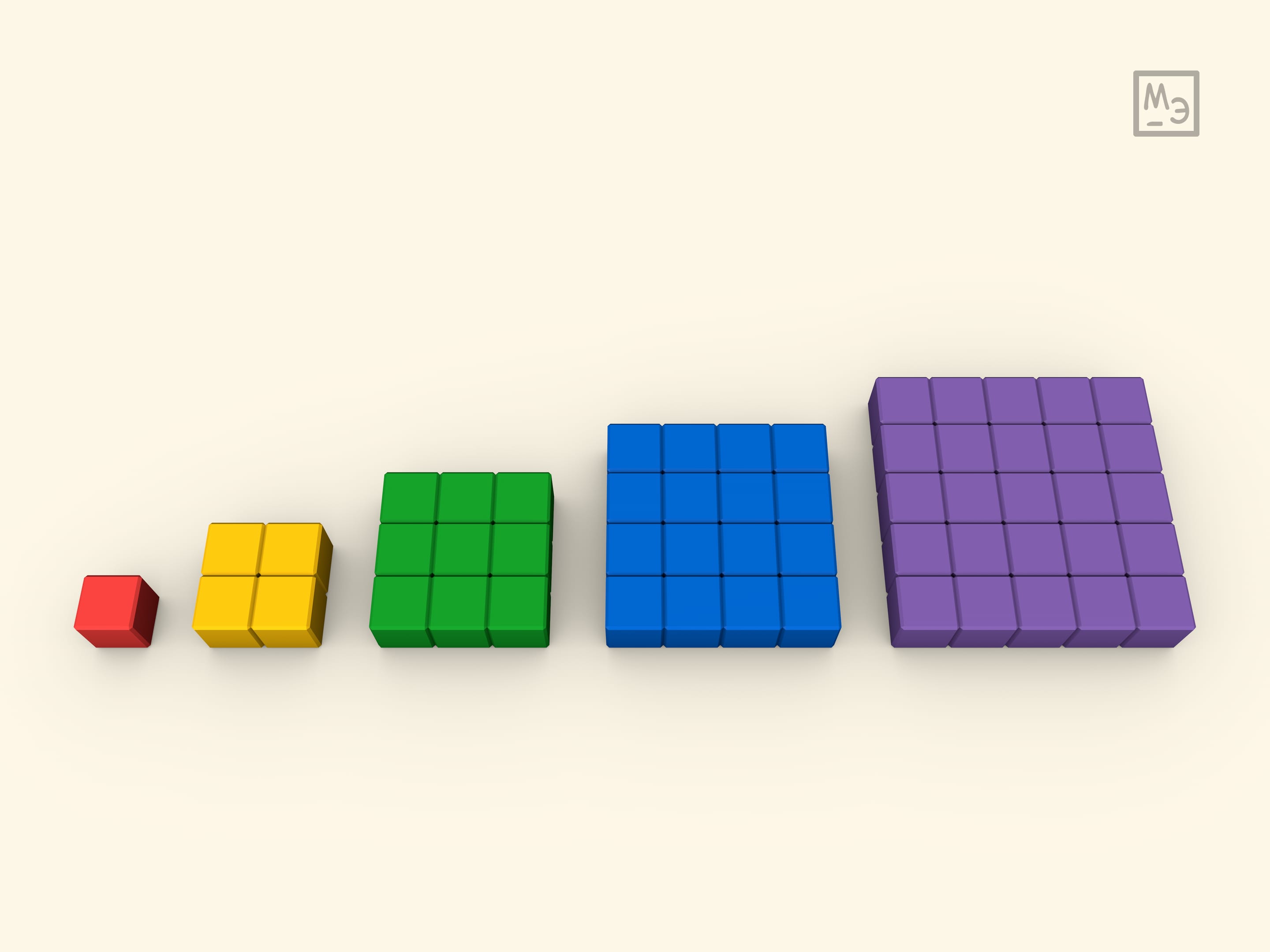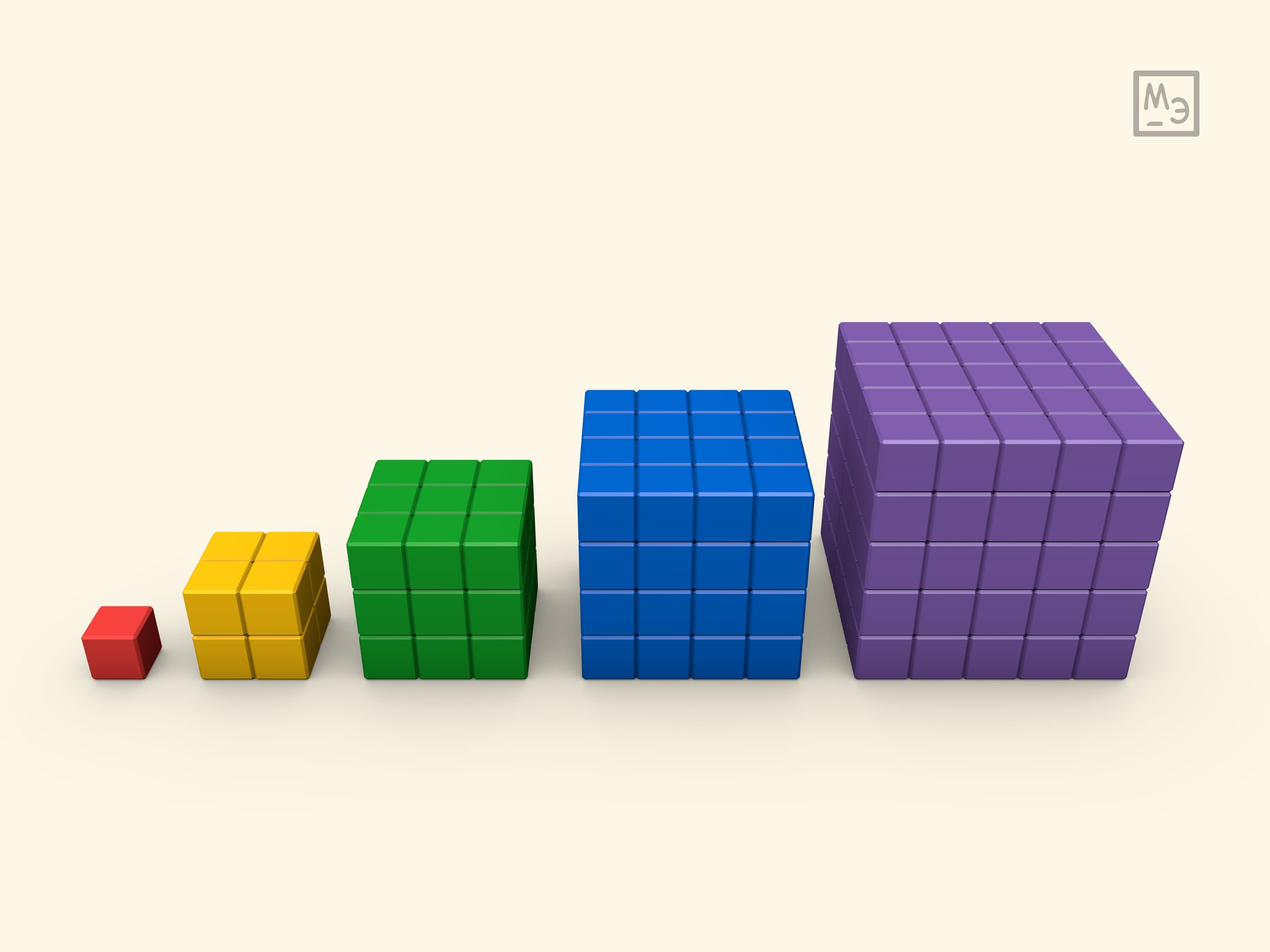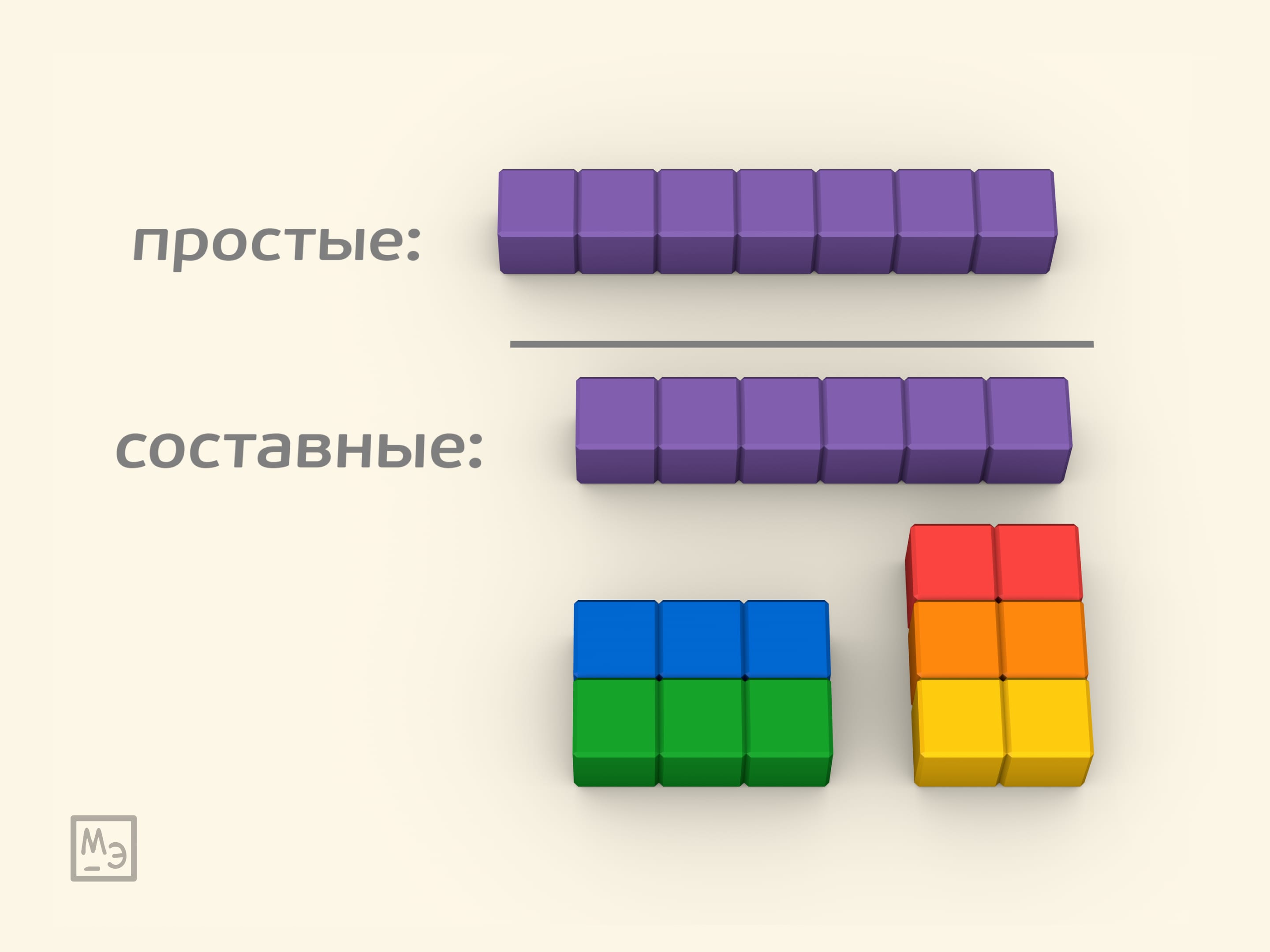The coloured cubes can be helpful not only in primary school but also in secondary school. They can be used to demonstrate various numerical ratios geometrically.
A classic example is the visualisation of a Gaussian calculation of the sum of the first numbers of a natural number series. In the same way the sum of any arithmetic progression can be demonstrated.
The sum of odd numbers can be calculated through the area of a square in at least two ways: by laying it with coloured corners or with four figures of the same area.
To calculate the sum of the squares of the first numbers one has to go out into space, and it is easier to make a standalone model, and with the help of number cubes one can form a hypothesis, what the sum of the cubes of the first numbers is equal to.
You can also use the number cubes to explain to those who are new to maths, what is the square and the cube of a number, and illustrate what the square of the sum of two numbers is.
